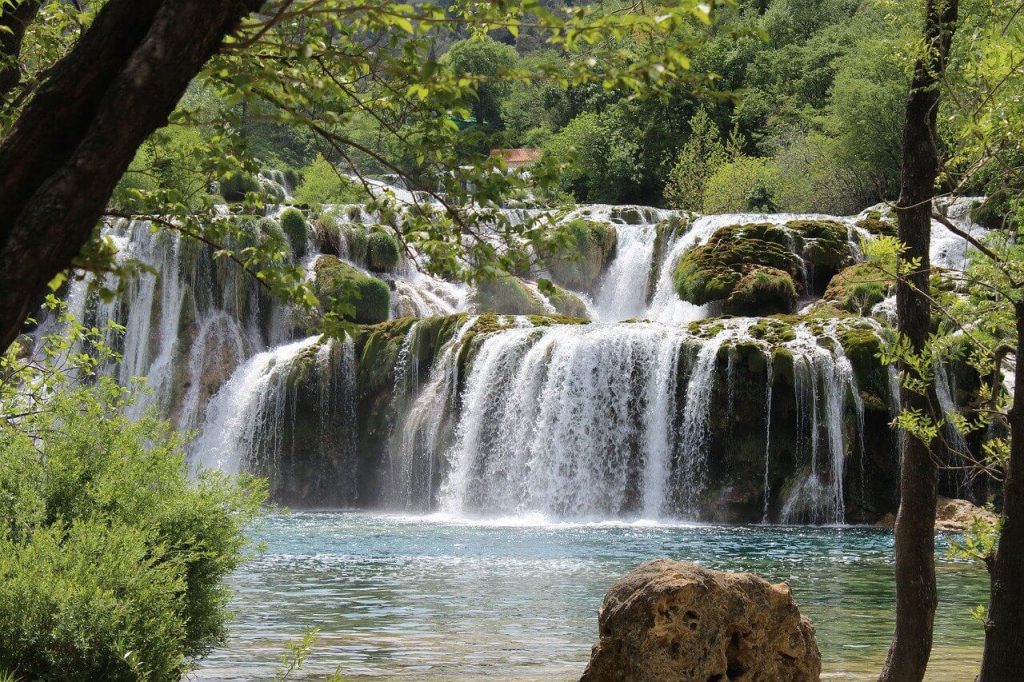After a long absence, the strictly protected pond turtle species (Emys orbicularis) has found a haven at the foot of Europe’s longest travertine barrier. An adult and two young individuals have been confirmed, reports Sibenik.in.
The pond turtle has ideal living conditions in Krka National Park. It is most numerous in the middle and upper course of the Krka river, especially along the banks near the Krka monastery: the marsh at the foot Carigradska draga is its essential habitat. Thanks to the reduction in the number of visitors caused by the pandemic, the pond turtle returned to the area of Skradinski Buk after many years. The swimming ban in Skradinski Buk has further reduced the pressure on the aquatic ecosystem, so this year they lay eggs. The natural habitats of pond turtles are stagnant and slow-flowing freshwater rich in vegetation, such as muddy-bottomed lakes, ponds, rivers, canals, floodplain forests, and brackish waters. Since it is a cold-blooded animal, it is suitable for quiet places to sunbathe, mostly on stumps and rocks.
The pond turtle is a strictly protected species: protected by the Nature Protection Act, the European Union Directive on the Protection of Natural Habitats and Wild Fauna and Flora (Habitats Directive), and the Convention on the Conservation of European Wildlife and Natural Habitats (Bern Convention). Furthermore, Emys orbicularis is the target species of the ecological network Natura 2000, a conservation area important for species and habitat types HR2000918 Krka and the surrounding plateau. The name Emys comes from the Greek word “emys” (ὲμύς), which means “freshwater turtle”.
The pond turtle is also active at night when it hunts and searches the surroundings but never moves away from the water. It feeds mainly on invertebrates, most often beetles, snails, shrimp, earthworms, and tadpoles, less often on amphibians and smaller fish, and least on aquatic plants. It has a hard shell, more flattened than a land turtle and slightly wider at the back. In populations in the Mediterranean, the shell is about fifteen centimeters long. It has five well-visible toes with claws on its front legs and four on its hind legs.
Males and females are easily recognizable, primarily by size: females are larger than males. As the animal grows, so do the plates that cover the carapace (upper) and plastron (lower part of the shell). They form growth zones, with which the age of the individual can be determined by counting the rings. Like rings on a tree, they grow in concentric rings spreading from one corner. Growth largely depends on the climatic conditions where the turtle lives, so it is slowed down in winter or during the dry season. In the unfavorable season for growth, certain parts of the rings tear and darken, and in the good season, they expand. Other factors that affect growth rate are sex, habitat characteristics, diet type, and food availability.
The pond turtle chooses land-laying areas with sandy surfaces rich in necessary food and safe from predators. They have the so-called temperature-dependent determination of embryonic sex: eggs incubated at temperatures below 25° C only males will develop, and those incubated above 30° C only females will develop. The ratio of males to females due to different natural conditions during the day and night is generally 50:50. Pond turtles reach sexual maturity from 6 to 8 when they grow to a length of about 12.5 cm. They are then considered fully developed adult individuals. Their development is sensitive and depends on ecological, genetic factors, food availability, and habitat quality. The oldest record of the presence of a pond turtle in “Kerka” at “Scardone” dates from 1780 (in the work of Pietro Nutrizi Chrisogon Notizie per servire alla storia naturale della Dalmazia).
For more, follow our lifestyle section.








